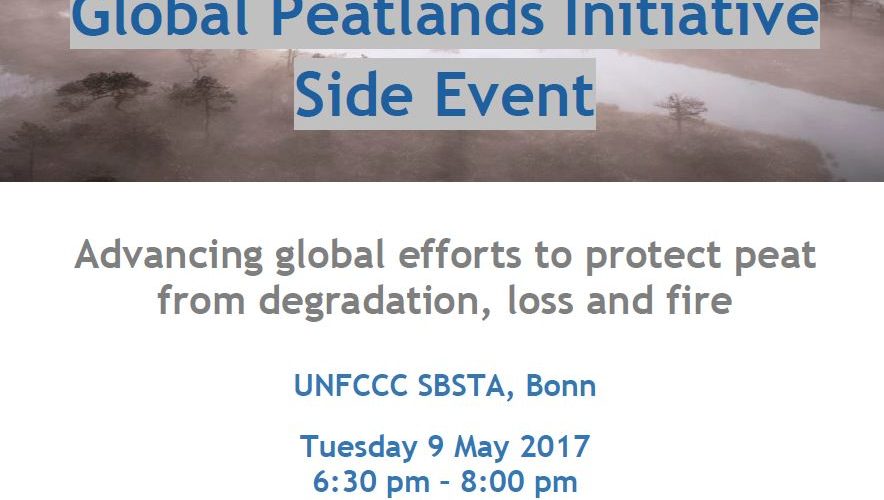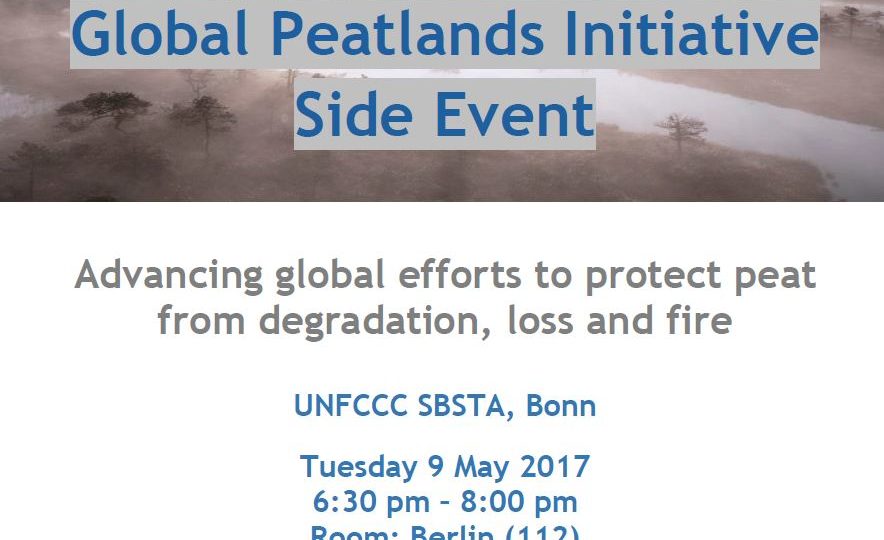Wetlands International is attending the 46th session of the Subsidiary Body for Scientific and Technological Advice (SBSTA) from 8 to 18 May 2017 at the World Conference Centre in Bonn. Our main aim is to advocate for the mitigation potential of peatlands and raise awareness on the impacts of peatland degradation on people, nature and climate.
- The EU can play a leading role in the climate change fight globally. We call on the EU to support our asks to protect, restore and sustain peatlands worldwide by including them in all the key climate and energy policies and to put them forward in the negotiations in Bonn.
Peatlands are key areas for carbon storage, because they contain between 15 to 30 percent of the world’s carbon stores. Drainage and/or degradation of peatlands has at least three important consequences with major social and economic effects.
1) When drained, the peat oxidizes and carbon is continuously released into the atmosphere as CO2, contributing to climate change.
Two billion tonnes of CO2 are emitted annually as a result of peatland drainage and reclamation, mainly for forestry and agriculture. This is equivalent to 5% of the global anthropogenic CO2 emissions, and represents almost 25% of the total carbon emissions from the land use, and use change and forestry (LULUCF) sector. Unlike deforestation, which causes one-off and almost immediate emissions, the emissions from drained peatlands continue for decades and even centuries as long as the land remains drained, causing the oxidation of the peat carbon store that has been accumulated over millenia. In addition, fertilisers for agriculture on peatlands lead to high emissions of nitrous oxide, while drainage canals result in emissions of methane; both very potent GHG’s.
2) Drained peatlands are extremely fire prone, and fires have repeatedly destroyed millions of hectares and without including the socio-economic impact of peatland fires on people.
Peatlands fires produce high levels of particulate matter contributing to haze plumes that have a direct impact on human health (respiratory problems, eye irritations, involving hundreds of thousands of outpatient treatments, thousands of hospitalisations and many deaths).
3) Lastly, the loss of peat due to oxidation results in subsidence of the peatland which brings the land surface down to sea or river level and eventually leads to frequent or even permanent flooding and loss of productivity.
In the tropics the process of subsidence after drainage is very fast due to high temperatures. Flood risks are also more severe because of high precipitation. Continuous peatland subsidence will eventually result in increasing flooding and loss of productivity in agriculture and silviculture, as shown in studies both in South-east Asia and elswhere (Hooijer et al. 2012).
It is important to phase-out drainage-based land-use from peatlands and consider alternative economic land-use options involving rewetting of peatland areas and planting of species adapted to such wet circumstances. This alternative development is called paludiculture. Peatlands can be cultivated with crops adapted to the wet soil conditions. This can reduce or even stop greenhouse gas emissions from peatlands and simultaneously provide sustainable livelihoods from peatlands as a basis for local business and livelihoods. There are hundreds of commercially interesting peat swamp forest plant species that can be used for this.
This will be discussed during the side event organised by Wetlands International in the framework of the Global Partnership Initiative on 9th May from 6.30pm to 8pm – Room Berlin- WCC Bonn. Download the invite.

Global-Peatlands-Initiative-Side-Event.pdf
download

